Published by Center for Economic and Policy Research
On Tuesday 5 March 2013, Venezuelan president Hugo Chávez passed away after 14 years in office. Below is a series of graphs that illustrate the economic and social changes that have taken place in Venezuela during this time period.
1. Growth (Average Annual Percent)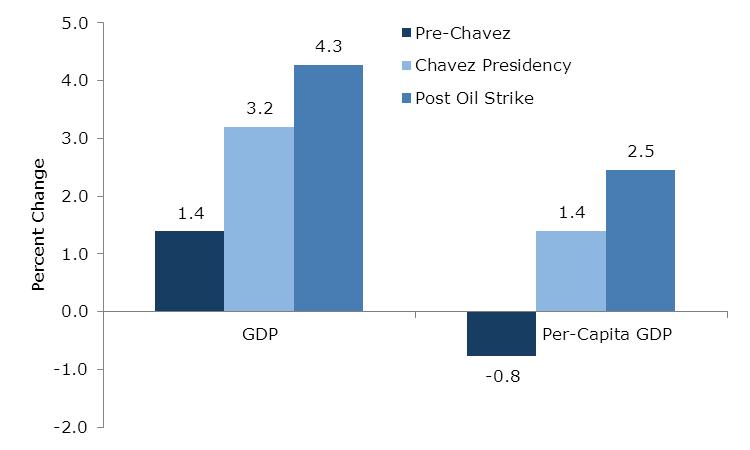
Source: Banco Central de Venezuela
This graph shows overall GDP growth as well as per-capita growth in the pre-Chávez (1986-1999) era and the Chávez presidency.
From 1999-2003, the government did not control the state oil company; in fact, it was controlled by his opponents, who used it to try to overthrow the government, including the devastating oil strike of 2002--2003. For that reason, a better measure of economic growth under the Chávez government would start after it got control over the state oil company, and therefore the economy.
Above you can see this growth both measured from 2004, and for the 1999-2012 period. We use 2004 because to start with 2003, a depressed year due to the oil strike, would exaggerate GDP growth during this period; by 2004, the economy had caught up with its pre-strike level of output. Growth after the government got control of the state oil company was much faster.
2. Public vs. Private Growth – 1999-2012 (Average Annual Percent)
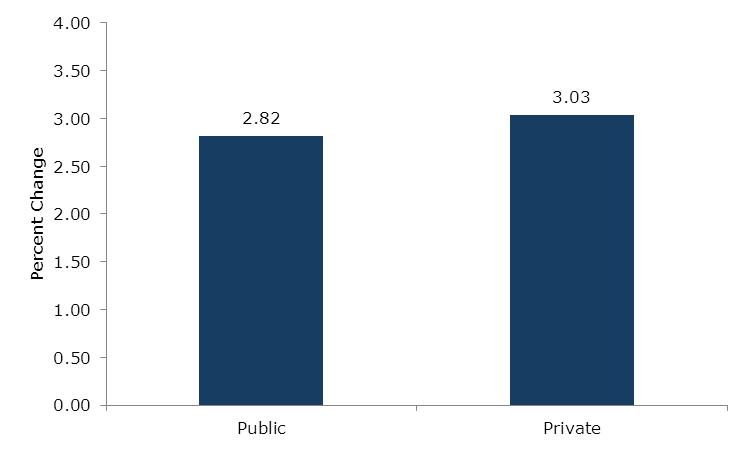
Source: Banco Central de Venezuela
This graph shows the growth of the private sector versus the public sector during the Chávez years.
3. Inflation: Pre-Chávez vs. Chávez Years
Source: Banco Central de Venezuela
Inflation in Venezuela, consumer price index.
4. Unemployment Rate: Before and After Oil Strike
Source: Banco Central de Venezuela, INEC
After the oil strike (and the deep recession that it caused) ended in 2003, unemployment dropped drastically, following many years of increases before Chávez was elected. In 1999, when Chávez took office, unemployment was 14.5 percent; for 2011 it was 7.8 percent.
5. Poverty and Extreme Poverty Rate
Source: INEC
Poverty has decreased significantly, dropping by nearly 50 percent since the oil strike, with extreme poverty dropping by over 70 percent.
6. Gini Coefficient, 2001-2003 - Latin America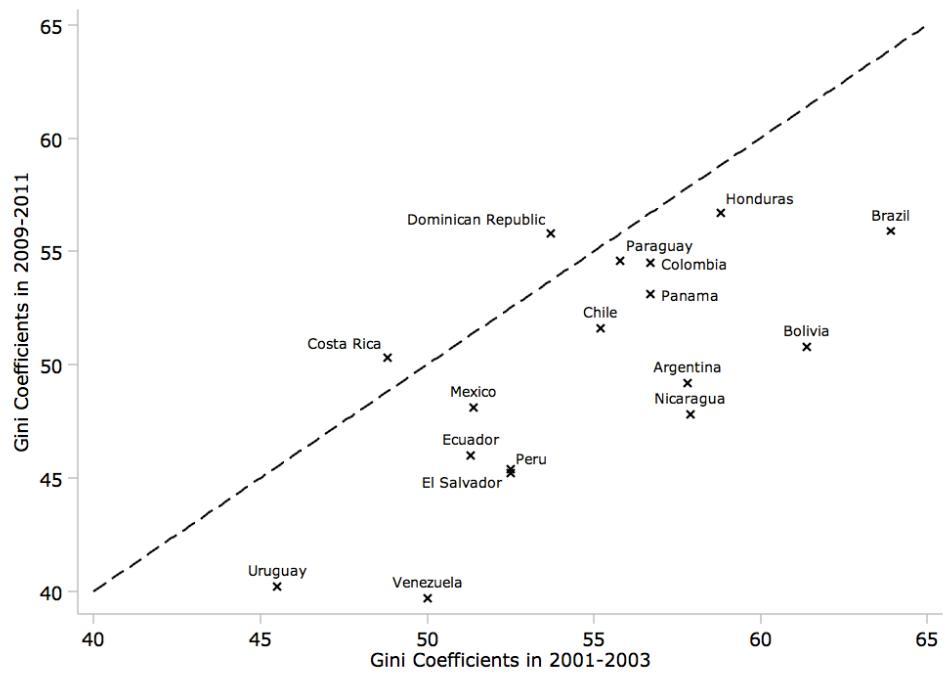
Source: Economic Commission on Latin America and the Caribbean
The Gini coefficient, measuring income inequality, fell from 0.5 to 0.397, the lowest Gini coefficient in the region.
7. Social Spending as a Percent of GDP
Source: SISOV
Social spending doubled from 11.3 percent of GDP in 1998 to 22.8 percent of GDP in 2011.
8. Education: Net Enrollment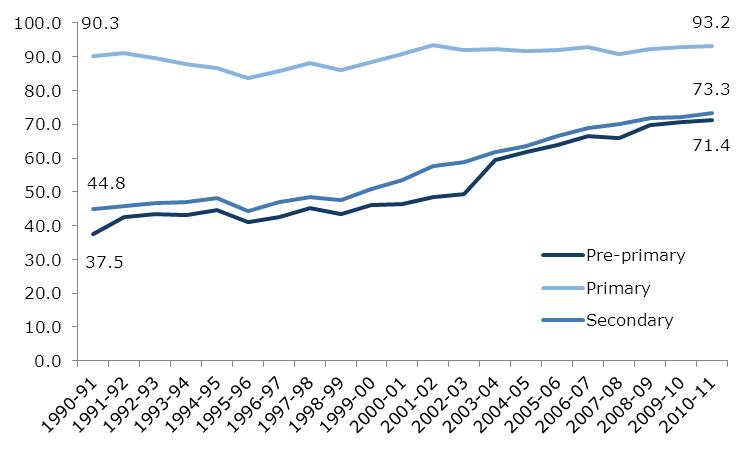
Source: SISOV
9. Graduates from Higher Education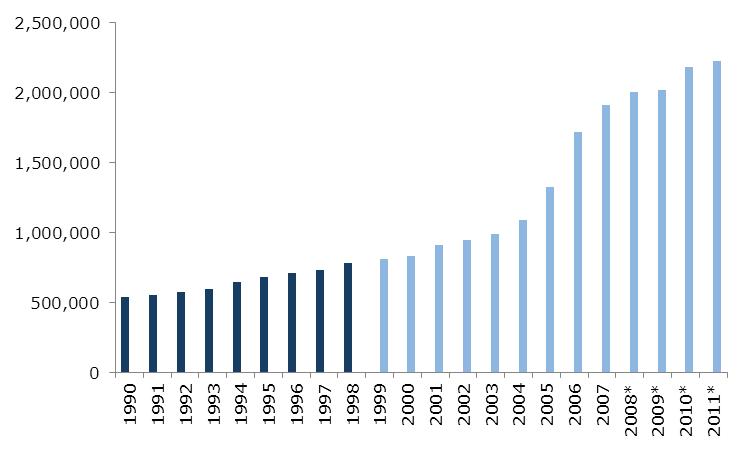
Source: Ministerio del P.P. para la Educación Universitaria
10. Child Malnutrition- Age 5 and Under
Source: Instituto Nacional de Nutrición
11. Venezuelans Receiving Pensions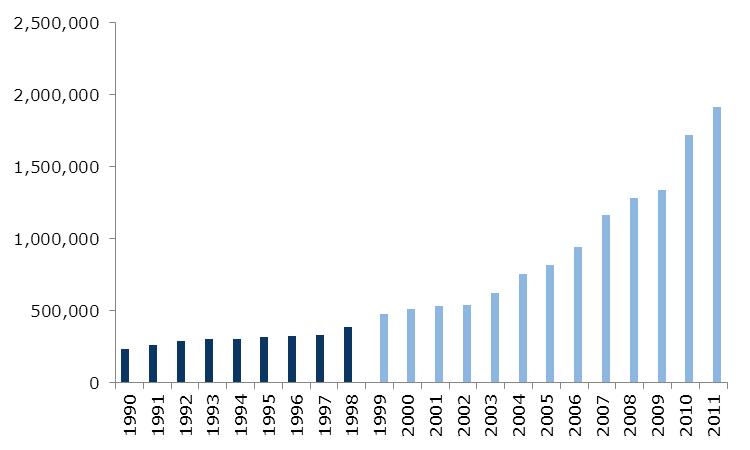
Source: Instituto Venezuela de los Seguros Sociales
The number of Venezuelans receiving pensions has increased from less than 500,000 in 1999 to nearly 2 million in 2011.